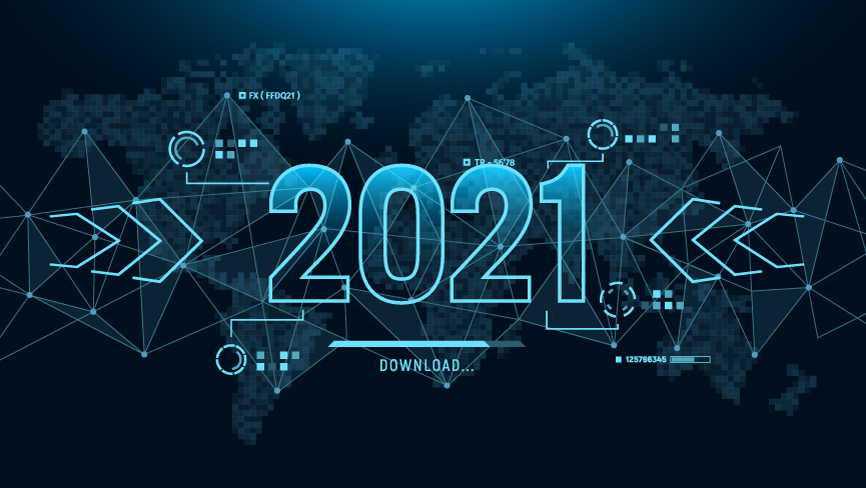No one could have foreseen the changes that were set in motion in 2020. While the current state of affairs has certainly turned our lives upside down, it has also pressured companies to double down on their efforts to go digital, as the year saw businesses pushing ahead with previously initiated activities and ensuring speedy implementation of their digital transformation initiatives.
In their forecasts for the year 2021, leading analysts point to where that journey might take us as they map out the year’s most salient issues. Of these, Fabasoft sees a number of top trends as being particularly noteworthy: anywhere operations, intelligent composable business and artificial intelligence, customer data platforms, and hyperautomation 2.0.
Anywhere operations
In all likelihood, working from home will become a permanent fixture of working life in the wake of the ongoing developments. As a result, companies will need to adopt a more flexible business model – including a transition to the cloud. An “anywhere operations” model makes it possible to access, transmit, and share data and processes even outside of the corporate network. It gives customers, employers, and business partners secure and reliable access to documents and information such as contracts from wherever they are. This raises both in-house and customer collaboration to a whole new level – well beyond the scope of typical use cases. Digitizing business processes such as these ensures that all administrative processes will continue to run smoothly without downtime, even in the event of further restrictions in both the social and the business environments.
Intelligent composable business and artificial intelligence
Agility has become a necessity of our time – intelligent composable businesses are companies that adapt quickly to changing realities. To achieve this kind of speed, they need to lay the groundwork that will empower them to make business-relevant decisions at short notice based on the data that is available to them. Immediate access to business-relevant information is a crucial component of this approach, which calls for eliminating unwieldy processes that waste time as well as accelerating the ability to react to any changes.
In this context, the use of artificial intelligence is a major contributing factor when it comes to process optimization. AI’s relevance will continue to grow steadily in the coming years, and its impact on software automation will be particularly significant. Companies with a robust AI engineering strategy will find it easier to ensure the performance, scalability, and reliability of AI models. In the field of smart contract management solutions and cloud-based systems for managing technical data and documents, AI-based content analytics provides support for making process-driven decisions related to routine tasks. AI does more than just recognizing the content of documents such as contracts or industry documents; it also understands this content, which gives it the ability to manage the associated workflows and standardize processes.
Customer data platforms
According to business magazine Forbes, the demand for customer data platforms (CDPs) has skyrocketed in recent months. CDPs help simplify the process of organizing fragmented data from disparate sources by collecting, structuring, and tagging all the available data to make it more usable. Since the amount of data is growing exponentially, a CDP is an indispensable tool for making the data accessible to all relevant individuals in a transparent and well structured format. Now that business activities as a whole are becoming progressively decentralized – in part due to new operating models for mobile working, but also as a result of the rapid pace of data growth – CDPs will become markedly more relevant in 2021, particularly in connection with digital business processes.
Hyperautomation 2.0
Hyperautomation 2.0 moves one of Gartner’s top strategic trends from last year to the next level. Demand for automating recurring manual processes and tasks picked up speed in 2020. Task-based processes have given way to process-driven methods, which involve automating a number of tasks within a given process. Hyperautomation is typically an advanced form of automation that aims to complete tasks and processes faster, more efficiently, and with fewer errors.
The extent to which various tasks and transactions that are based on rigid and fixed rules can be automated is expected to widen in the coming years. Realizing that level of automation, however, calls for a new automation strategy that focuses on optimizing digital processes across the board, from the IT infrastructure to customer-oriented applications. By uniting integration, DevOps, monitoring, and management, hyperautomation delivers automation across the entire lifecycle of the process. As a result, it facilitates end-to-end workflow automation for managing complex dependencies across multiple platforms.




